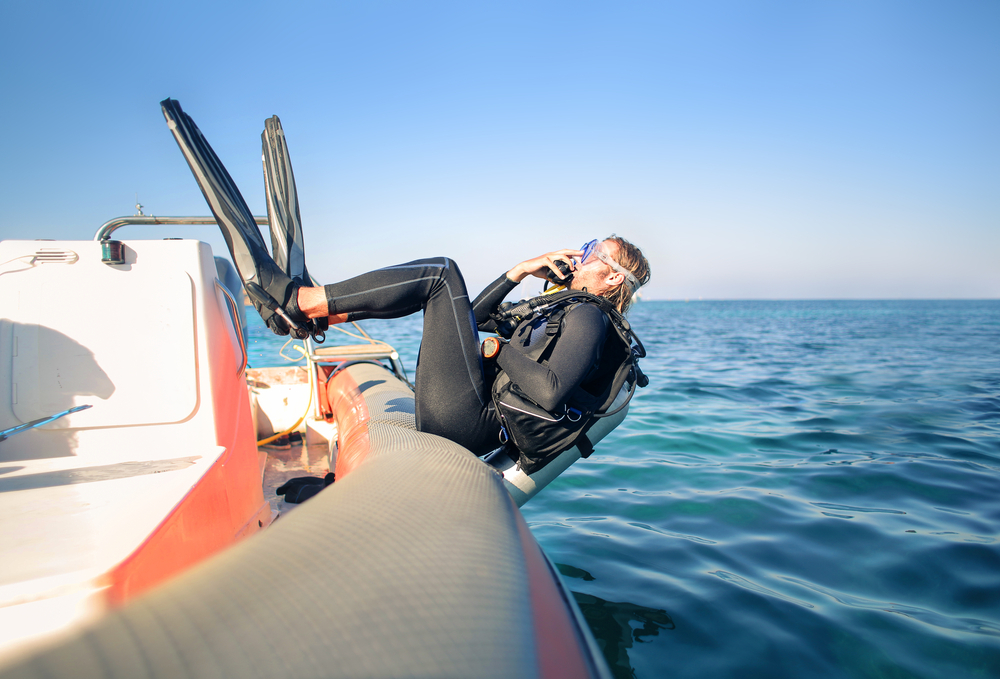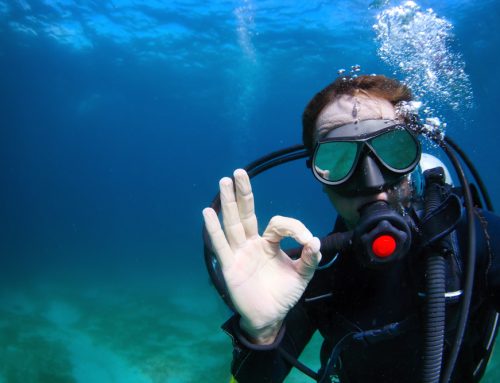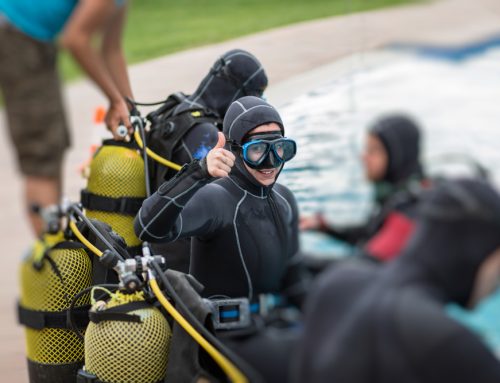Scuba diving is an exciting opportunity to explore the natural world in unforgettable locations. Without proper safety gear and safe diving practices, this fun hobby can quickly become dangerous. Why do scuba divers dive backward? Learn why and where you can learn more about safe diving tips. At A-1 Scuba, we offer training and dive gear for individuals with all levels of diving experience.
Why Do Scuba Divers Dive Backwards?
Just like using a diver down flag, diving back into the water is a standard safety technique. While it might not seem like a long distance to drop, jumping in feet first or head first can take its toll on your body. Backward diving allows scuba divers to keep a hand on their gear while entering the water to avoid losing a mask or getting lines tangled.
Understanding the Backward Roll; What Is It?
The backward roll is a specific technique used to enter the water with all your scuba gear on. While it seems easy, it can take some practice to fully domain this method. First, be sure all your gear is secure and ready for a dive.
Next, you’ll place your right hand on your regulator and use your fingers to stabilize your mask. Your left hand typically holds loose hoses at your side. Tuck your chin towards your chest and fall back into the water.
Reasons for This Different Dive Style
There are three fundamental reasons that a backward roll is a preferred method of entering the water. When you opt for a backward roll, you protect these key areas from injury or damage:
- Your body
- Your boat
- Your gear
Jumping into the water headfirst or feet first can increase the risk of an injury. This is true whether you’re jumping from a small boat or a large one. The impact of a feet-first dive is hard on your joints and can cause an injury if you don’t hit the water accurately. Similarly, a headfirst dive can cause an injury from the impact or from loose gear.
A backward roll protects your boat from excessive rocking. Any other dive typically causes a boat to rock unsteadily, which could cause other divers to fall as they’re preparing to dive. Your gear could also be damaged, particularly your mask and fins.
Understanding Other Entry Techniques
Many divers prefer the backward roll, but it’s not the only available type of entry. Here are some other entry techniques that can be used to enter the water to start your scuba dive safely:
- The giant stride
- The seated entry
The giant stride uses a stable platform on a dive boat. If you can safely stand on the edge of the platform with your fins over the edge, then this option is possible for you. Keep a hand on your regulator and mask as you prepare for a giant stride. Check the water for any obstacles before stepping out into the water and be sure your step is large enough to avoid hitting the side of the boat with your tank.
If you have limited space or your entry platform isn’t stable, the seated entry is another safe option. Double-check your gear and sit on the edge of the boat. Put your legs over the side and hold on to the side of the boat with your arms. Turn around, so you’re facing the boat as you lift yourself over the edge.
Dive Backwards With the Professionals
Why do divers fall backward? It’s all about safety. Learn to dive safely with A-1 Scuba in Denver, Colorado, for a safe, unforgettable adventure. Contact us today to learn more safety tips, shop for scuba gear, or plan an exotic destination dive to explore the world from the depths of the ocean.
Photo Credit to Merla





